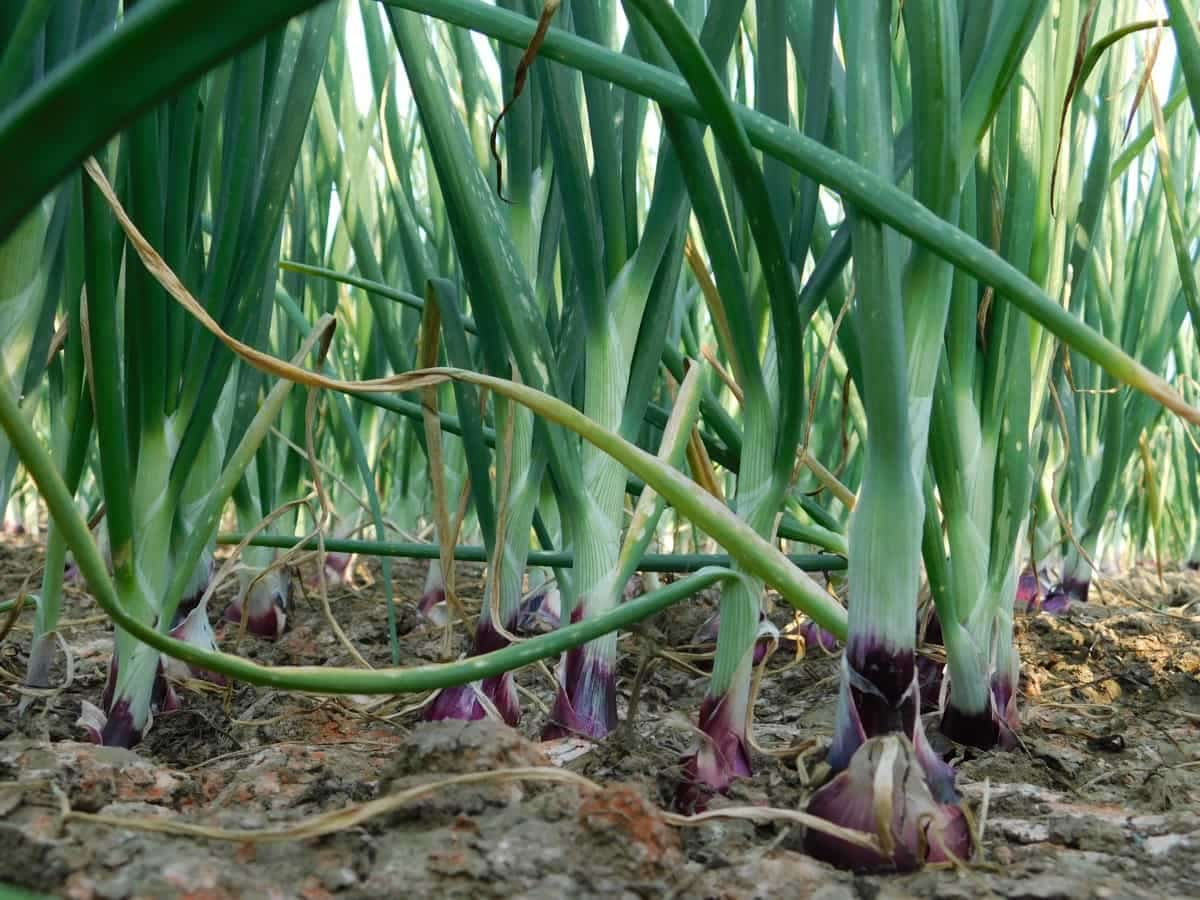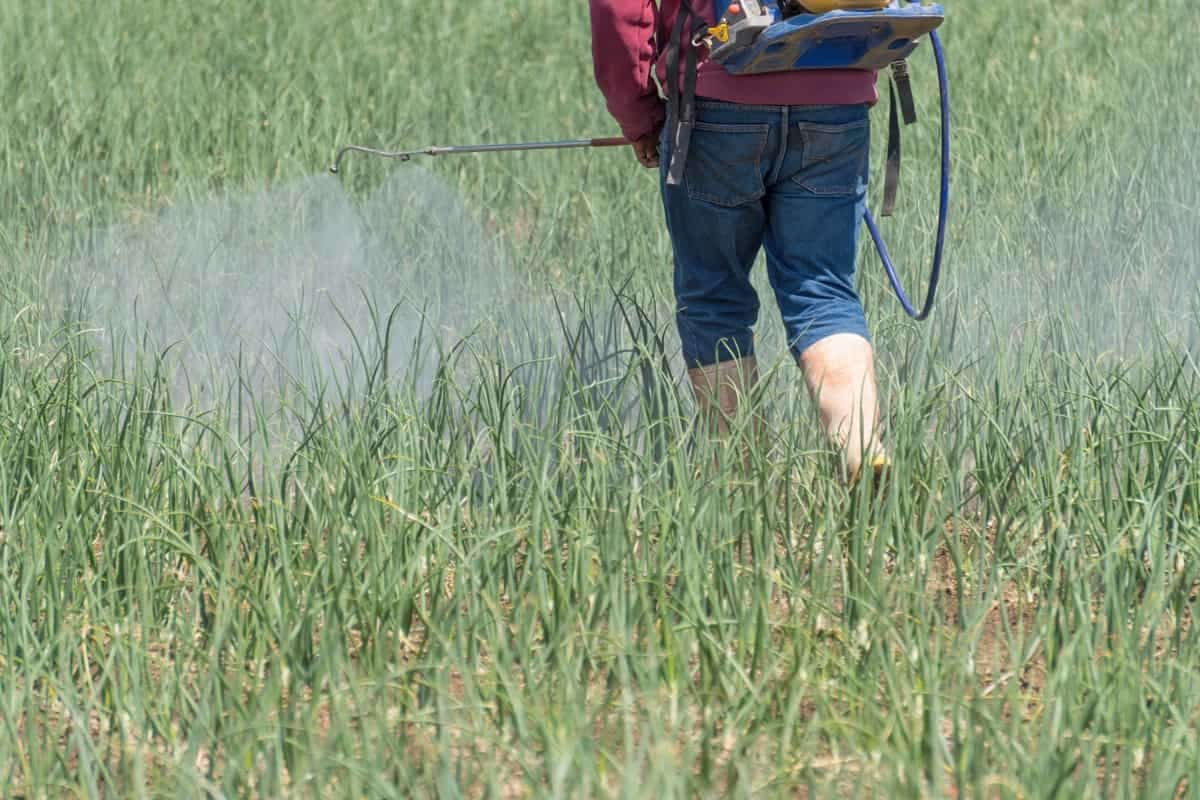Onions are one of the world’s most versatile and widely used vegetables. They add flavor to various dishes, but unfortunately, they’re also vulnerable to diseases that can harm their growth and reduce yield. Onion diseases can be challenging for many gardeners, but effective natural and organic treatments are available.

How to Treat Onion Diseases
Natural Remedies for Onion Diseases
One of the most effective natural treatments for Onion diseases is crop rotation. This involves planting Onions in different areas of your garden each year to prevent soil-borne pathogens from building up over time. By rotating your crops, you’ll reduce the risk of fungal infections such as white rot and fusarium wilt. Another natural remedy for Onion diseases is compost tea. Made from composted materials soaked in water, this nutrient-rich solution provides essential nutrients to your plants and promotes healthy soil biology.
Compost tea has been shown to help control bacterial and fungal infections in Onions. Garlic extract is another powerful natural remedy for Onion diseases. Applying garlic extract directly to your Onion plants may help keep them healthy and strong throughout the growing season. Neem oil is an all-natural insecticide that controls common pests like thrips and aphids without harming beneficial insects like bees or ladybugs.
Best Fungicides for Onion Diseases
Onion plants are susceptible to various fungal diseases, including downy mildew, powdery mildew, and purple blotch. These Onion diseases can cause significant yield loss if not treated effectively. Fortunately, there are several fungicides available that can help control these diseases. One of the best fungicides for Onion diseases is a copper-based fungicide. It is an organic compound that helps prevent and treat fungal infections in Onions.
Copper reduces the growth of fungi by disrupting their cell membranes and inhibiting spore germination. Another effective fungicide for Onion disease control is sulfur-based products. Sulfur has been used as a natural pesticide for centuries due to its broad-spectrum activity against many plant pathogens, including fungi.
When applying any fungicide to your Onions, read and follow all instructions carefully to ensure its effectiveness while minimizing environmental harm or accidental exposure risks. It’s essential to remember that prevention is always better than cure when it comes to controlling Onion disease outbreaks; maintaining good hygiene practices in your garden area before planting new crops and crop rotation will limit soil-borne infections from carrying over into future seasons.
Controlling Onion Pests and Diseases
Controlling Onion Pests and Diseases is crucial for maintaining a healthy Onion crop. Some of the most common pests and diseases that affect Onions include thrips, maggots, smut, downy mildew, and bacterial rot. One effective way to control pests is by using beneficial insects. Additionally, planting companion plants like marigolds can deter nematodes from attacking your Onions.
For fungal diseases such as downy mildew or smut, it’s important to remove any infected plant debris immediately and avoid overhead watering, which can promote the growth of fungi. Applying natural fungicides made from neem oil or garlic extract can also help prevent the spread of disease.
Bacterial rot is especially difficult to control once it has taken hold in an Onion crop. It’s best prevented by practicing good sanitation measures, including proper crop rotation and avoiding over-watering. Preventing pest infestations and disease outbreaks before they occur is key to effectively controlling Onion pests and diseases. Regularly inspecting your crops for signs of damage or infection will allow you to take quick action before things get out of hand.
Preventing and Treating Common Onion Diseases
Onion diseases are a common problem for gardeners. However, there are several steps you can take to prevent and treat these issues. One of the most important things you can do is to choose disease-resistant Onion varieties. Another key factor in preventing Onion diseases is maintaining proper soil moisture levels. Onions need consistent watering but also good drainage to prevent root rot. Make sure not to overwater or underwater your Onions.
In case you missed it: Common Onion Pests and Diseases: Symptoms, Treatment, and Control

Crop rotation is another effective way to prevent Onion diseases from taking hold in your garden. This involves planting different crops in the area where Onions grew the previous year, which helps break up any disease cycles that might be present. If you notice signs of an Onion disease, such as yellowing leaves or fungal growth on the bulbs, it’s crucial to act quickly and start treating the issue immediately.
Organic fungicides like copper-based sprays can help control fungal infections. In addition, removing infected plant debris and practicing good sanitation measures throughout your garden can also go a long way toward preventing future outbreaks of Onion diseases.
Effective Strategies for Onion Disease Control
Crop rotation is an effective strategy for managing Onion diseases. Avoid planting Onions in the same spot every year, as this increases the chances of soil-borne pathogens building up in your garden bed. Onions grow best in well-drained soil. Poorly drained soils tend to hold water longer, increasing the risk of fungal infections like Onion white rot or botrytis leaf blight. Before planting add organic matter to your soil, as it helps improve drainage.
Maintaining good sanitation practices around your growing area is essential for controlling Onion diseases. Remove any infected plant material immediately and dispose of it from your garden area. Also, clean your tools after each use with a disinfectant solution made from bleach or alcohol. Another effective strategy is using resistant varieties when possible.
Curbing Onion Blight with Proven Treatments
Onion blight is a fungal disease that can cause significant damage to Onion crops. It typically spreads through water, infected soil, and plant debris. Symptoms of the disease include yellowing leaves, brown spots on the bulbs, and stunted growth. To curb Onion blight effectively, it is essential to identify and treat it promptly with proven treatments. Another way to control Onion blight is by practicing crop rotation in your garden.
By avoiding planting Onions in the same location for several years, you reduce the risk of fungal spores building up in the soil. Good sanitation practices can also help prevent Onion blight from spreading. Remove any diseased plants immediately and dispose of them from your garden area. It’s important to note that prevention is always better than cure for Onion diseases like blight. The use of resistant varieties and proper irrigation management are just some ways to decrease infection rates on your crop.
Combatting Onion Rot with Targeted Remedies
Onion rot is a common and frustrating problem for many gardeners. It can be caused by various fungi that thrive in moist conditions, particularly when the temperatures are warm. If left untreated, Onion rot can quickly spread to other plants in the garden. One effective way to combat Onion rot is by using targeted remedies. One such remedy is sulfur-based fungicides which work well against fungal infections that cause Onion rot.
They help prevent the disease from spreading further and are also useful in preventing future outbreaks. Another option for controlling Onion rot is through cultural practices such as crop rotation and soil amendments. Crop rotation involves changing where Onions are grown yearly to avoid planting them on soil recently hosted Onions or related crops like garlic or shallots.
In addition, adding organic matter such as compost or aged manure can improve soil health while providing nutrients necessary for healthy plant growth. This helps support strong root systems, making it more difficult for pathogens causing Onion rots to gain a foothold. Proper drainage of the surrounding area will help ensure excess moisture doesn’t build up around your Onions, creating an ideal environment for fungal growths leading to rotting bulbs.
In case you missed it: Frequently Asked Questions About Onion Farming

Conclusion
Onion diseases can cause significant damage to your crops. However, you can effectively prevent and control these diseases with the appropriate measures and knowledge. Always ensure you plant healthy Onions from a trusted source and maintain proper sanitation practices in your garden.
To get the most out of natural remedies for Onion diseases, it’s essential to identify the specific issue affecting your crop and choose an effective remedy accordingly. Regular inspection of your Onions is crucial in discovering potential issues early enough before they get out of hand.
- Feed Your Flock for Less: Top 10 Tips to Save on Chicken Feed
- Ultimate Guide to Ossabaw Island Hog: Breeding, Raising, Diet, and Care
- Hatching Answers: The Top 10 Reasons Your Chickens Aren’t Laying Eggs
- Eggs and Economics: Breaking Down the Cost of Raising Backyard Chickens
- Defend Your Greens: Proven Methods to Keep Iguanas Out of Your Garden
- Ultimate Guide to Cinnamon Queen Chicken: A Comprehensive Guide for Beginners
- Ultimate Guide to California Tan Chicken: Breeding, Raising, Diet, Egg-Production and Care
- Ultimate Guide to Marsh Daisy Chicken: Breeding, Raising, Diet, and Care
- 10 Types of Chicken Farming Businesses You Can Start for Profits